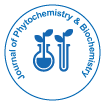Heterocycles, Back Bone of Drug Design
Received: 03-Oct-2017 / Accepted Date: 03-Oct-2017 / Published Date: 10-Oct-2017
Keywords: Medicinal; Cancer; Chemical; Drugs; Organic
Editorial
Heterocyclic chemistry started booming as a new area of research as a result of multidimensional progress of organic chemistry in 1800’s. The end of the World War II was marked by a giant outburst of the research in the area of heterocycles. This can be understood from the fact that till date more than half of six million compounds recorded in the chemical abstract are heterocycles. Approximately 60% of the small drug like molecules contains nitrogen in their scaffold. Heterocyclic core is present in more than seventy percent of drugs used today. Thus heterocycles constitute the largest class of organic compounds. Any carbocyclic compound, irrespective of its structure and functionality, can be transformed into a library of heterocyclic analogues just by playing a game of variation on one or more ring atoms with different elements. The permutations and combinations of such a replacement are numerous even if we confine ourselves to nitrogen, oxygen and sulfur. According to the Encyclopedia Britannica, “Any of a class of organic compounds whose molecules contain one or more rings of atoms with at least one atom (the heteroatom) being an element other than carbon, most frequently oxygen, nitrogen, or sulfur” [1]. The usefulness of the heterocycles in medicinal chemistry can be understood from their presence in essential amino acids like histidine and tryptophan to DNA and RNA [2], where they are present in the form of pyrimidine [cytosine, uracil and thymine] and purine [adenine and guanine]. Common examples of heterocyclic compounds are those containing pyridine ring. It is found in many natural scaffolds like niacin and pyridoxine. The heterocyclic compounds find their use in our daily lives in one form or another ranging from herbicides, photo stabilizers, dyes, sensitizers, flavoring agents and agrochemical [3-5]. The human diseases like inflammation, tuberculosis, cancer and diabetes have been treated with drugs containing heterocyclic scaffolds. Natural products like papaverine, codeine, theobromine, atropine, morphine and reserpine etc contain heterocyclic moieties. Azoles are five membered heterocyclic compounds comprising at least one atom of sulphur, oxygen or nitrogen other than carbon [5]. Some common azole containing drugs available in the market include Timolol (Anti-glaucoma agent), Atorvastatin (Anti-cholesterolemic), Sunitinib (Renal cell carcinoma and gastrointestinal stromal tumors), Anastrozole (Migraine), Rufinamide (Anticonvulsant), Risperidone (Schizophrenia), Captopril (Anti-hypertension) and Ranitidine (Antiulcer) etc. Thus we can say that heterocyclic chemistry is the back bone to the drug industry worth billions of dollars. The art of the drug designing depends on the strategies involved in the conjugation of heterocyclic scaffolds having specific medicinal and biological properties. Rationale selection of bioisosteric substituents, accompanied by a control of their solubility, hydrophilicity and bioavailability can lead to new molecules with potent target based activity [6]. The list is endless and the beauty lies in the fact that we are still in the process of discovering new molecules which can be used for the treatment of human health issues. An increase the number and nature of the bacterial and viral strains, along with developing resistance to the already available antibiotics has forced us to develop new drugs and pump them through the drug pipeline (synthesis and clinical trials) at the earliest. The market research firm Evaluate Pharma has predicted that the robust growth in new drug discovery is expected to reach a global $1.12 trillion dollars by 2022. Thus heterocyclic chemistry is still continuing to be a growing area of research with multiple benefits to human civilization.
References
- Pozharskii AF, Soldatenkov AT, Katritzky AR (1997) Heterocycles in life and society. Wiley 1st edition, New York: 301.
- Fan WQ, Katritzky AR (1996) In comprehensive heterocyclic chemistry II. Scriven, (ed.) Elsevier Pergamon Press: Oxford 4: 1-126.
- Dehne H (1994) In methods of organic chemistry (Houben-Weyl). Stuttgart (ed) 8: 305-405.
- Eicher T, Hauptmann S (2003) The chemistry of heterocycles: structure, reactions, syntheses and applications. Wiley-VCH (2nd edn): 371-373.
- Martins P, Jesus J, Santos S, Raposo LR, Rodrigues CR, et al. (2015) Heterocyclic anticancer compounds: recent advances and the paradigm shift towards the use of nanomedicine’s tool box. Molecules 20: 16852-16891.
Citation: Haider S (2017) Heterocycles, Back Bone of Drug Design. J Phytochemistry Biochem 1: e101.
Copyright: © 2017 Haider S. This is an open-access article distributed under the terms of the Creative Commons Attribution License, which permits unrestricted use, distribution, and reproduction in any medium, provided the original author and source are credited.
Select your language of interest to view the total content in your interested language
Share This Article
Open Access Journals
Article Usage
- Total views: 5862
- [From(publication date): 0-2017 - Jun 14, 2025]
- Breakdown by view type
- HTML page views: 4838
- PDF downloads: 1024
